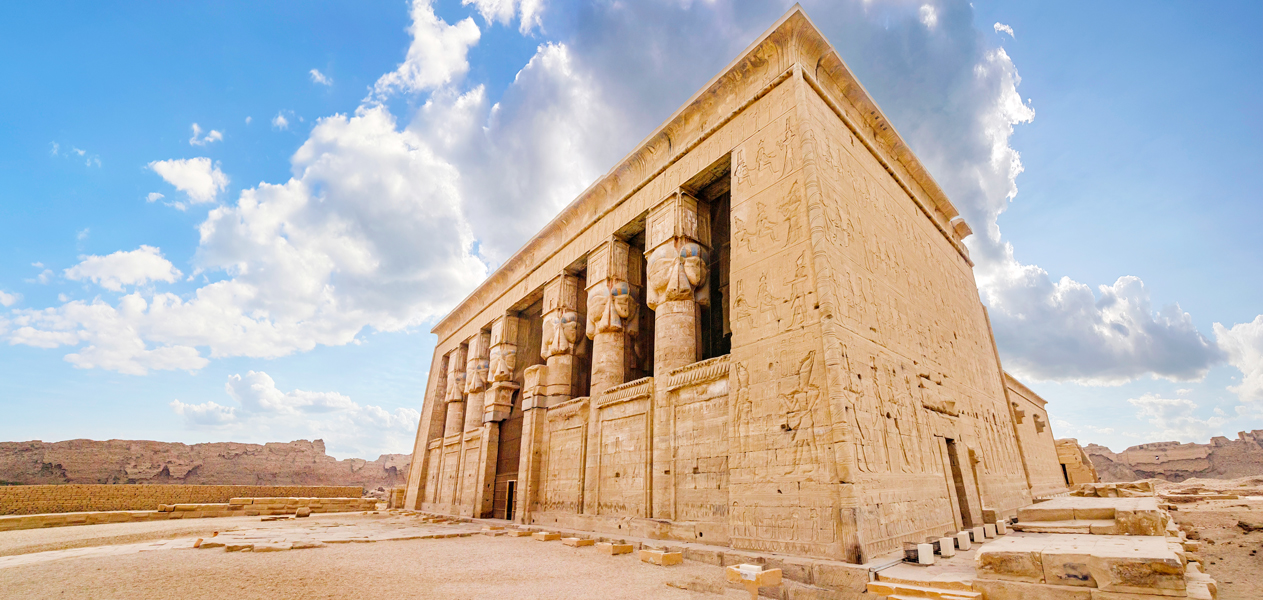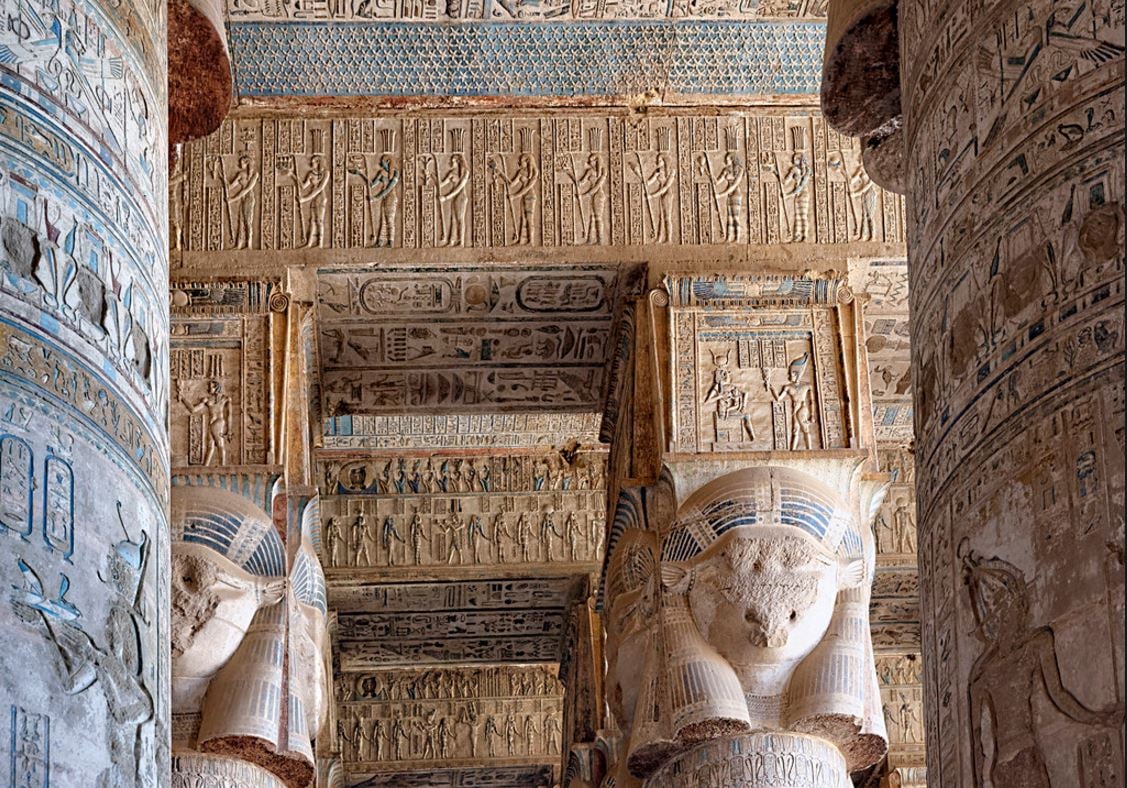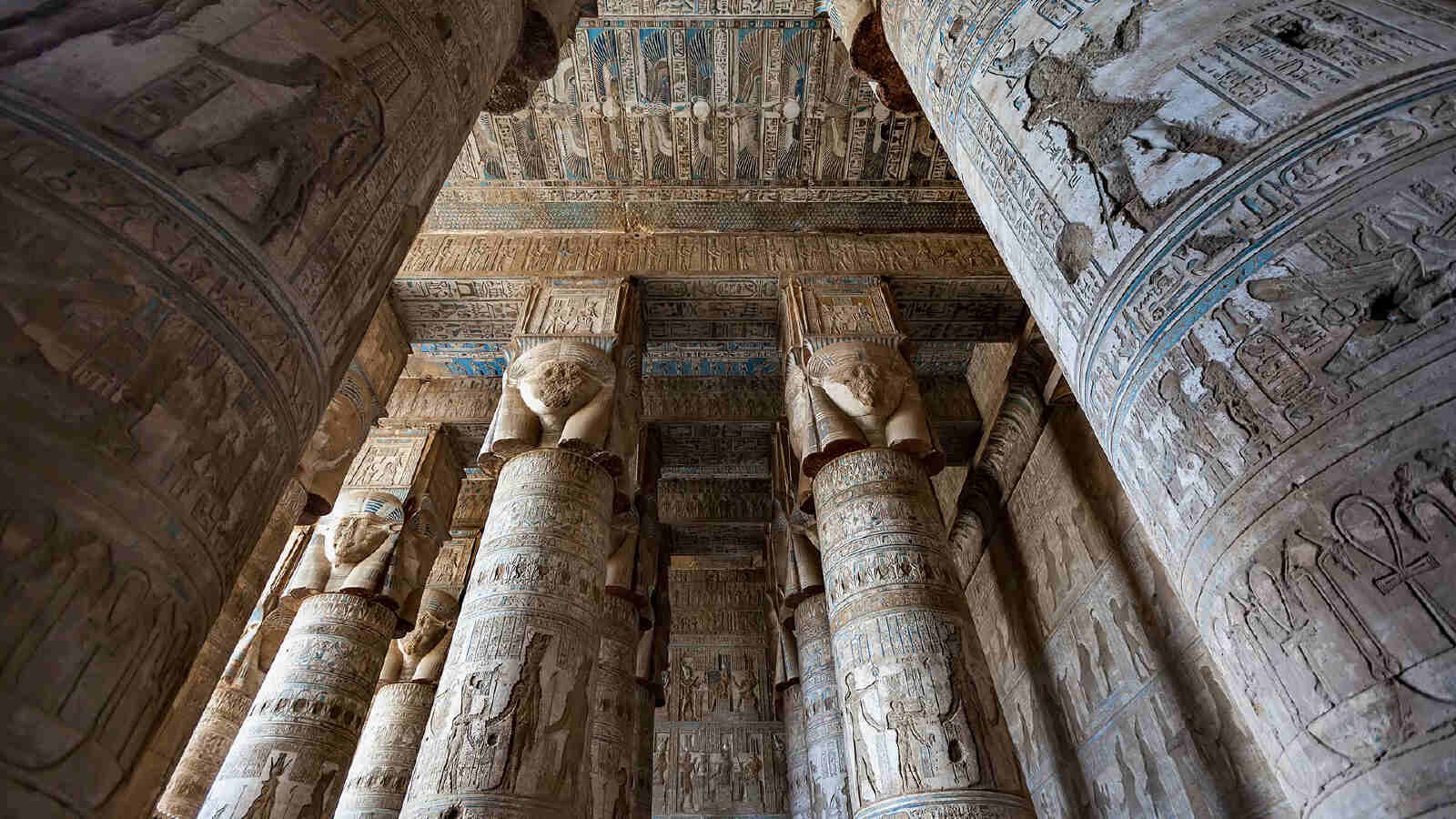The Dendera Temple complex, located near the town of Qena in Egypt, is one of the best-preserved and most impressive temple complexes from ancient Egypt. Its main structure, the Temple of Hathor, is an exemplar of Egyptian architectural and artistic achievement, showcasing a blend of religious, cultural, and historical significance.
This exquisitely preserved monument isn’t just any temple; it’s a testament to the enduring legacy of Hathor, the powerful goddess of love, joy, music, and motherhood. Imagine a place adorned with intricate carvings, astronomical ceilings, and a captivating atmosphere that transports you back to ancient Egypt. Get ready to embark on a journey through the heart of Dendera Temple!
Dendera Temple Historical Background

The construction of the Temple of Hathor dates back to the late Ptolemaic period, with substantial additions made during the Roman period. Although the site itself has a history that stretches back to the Old Kingdom, the majority of the structures seen today were built during the reigns of Ptolemy XII and Cleopatra VII. The temple was dedicated to Hathor, the ancient Egyptian goddess of love, beauty, music, and fertility, who was also regarded as the protector of women.
Construction of the Dendera Temple began around the 1st century BC, and continued well into the Roman era. Despite its relatively late construction date, the temple reflects a deep connection to Egypt’s rich pharaonic past. Dedicated to Hathor, one of the most popular deities in ancient Egypt, Dendera served as a major center for her worship.
Dendera Temple Architectural Features

As you approach Dendera Temple, prepare to be awestruck by its grand entrance. Six massive columns topped with the head of Hathor, framed by sistrums (sacred rattles associated with the goddess), create a monumental gateway. Even the entrance sets the stage for the beauty and significance that awaits within.
The Dendera Temple complex is a vast area with several notable features:
- Temple of Hathor: The centerpiece of the complex, this temple is famous for its grand façade adorned with six massive columns, each topped with Hathor-headed capitals. The hypostyle hall behind the façade is equally impressive, with 18 columns covered in hieroglyphics and elaborate carvings. The ceiling is decorated with astronomical scenes, including a depiction of the sky goddess Nut and the zodiac signs.
- Birth House (Mammisi): This smaller temple is dedicated to the birth of the god Ihy, the son of Hathor and Horus. It features reliefs that depict the divine birth and childhood of Ihy, symbolizing the cyclical nature of life and regeneration.
- Sanctuary and Inner Chambers: The innermost part of the Temple of Hathor includes the sanctuary where the statue of Hathor was once kept. Surrounding chambers contain detailed reliefs illustrating various religious rituals and mythological scenes.
- Crypts and Roof Chapels: The temple has several crypts that were used to store ritual objects. The roof chapels are particularly interesting, especially the chapel dedicated to Osiris, which contains the famous Dendera zodiac.
Artistic and Cultural Significance
Step inside the temple complex and prepare to be dazzled by the intricate artwork adorning the walls and ceilings. Hieroglyphs dance across the stone, telling stories of creation, offerings to the gods, and the rituals performed within the temple walls. Scenes depict Hathor in various forms, sometimes as a cow, a symbol of motherhood, and other times as a beautiful woman adorned with a sun disk and horns. These carvings offer a window into the mythology surrounding Hathor and the beliefs of the ancient Egyptians.

The reliefs and decorations throughout the temple are rich with symbolism and provide insight into ancient Egyptian cosmology, religious practices, and daily life. The Dendera zodiac, a bas-relief on the ceiling of one of the chapels, is particularly significant. It is a circular representation of the sky with figures of the zodiac signs and various constellations, reflecting the Egyptians’ advanced knowledge of astronomy.
The temple also served as a center for healing and pilgrimage. Hathor was revered as a goddess of healing, and people would come to the temple seeking her divine intervention for their ailments. The sacred lake within the complex was used for ritual purification.
Marveling at the Zodiac Ceiling
One of Dendera’s most captivating features is the famous zodiac ceiling. Etched on the ceiling of the hypostyle hall, this astronomical depiction showcases constellations and deities associated with them. While the exact purpose of the zodiac remains debated, it offers a glimpse into the Egyptians’ understanding of the cosmos and their connection to the divine.
A Legacy in Stone
Despite centuries of sand burial and the passage of time, Dendera Temple remains remarkably well-preserved. Walking through its halls, you can almost feel the echoes of ancient rituals and imagine the vibrant ceremonies that once took place within these walls. Dendera Temple is a powerful symbol of the enduring legacy of Hathor and a testament to the artistic mastery of the ancient Egyptians.
Preservation and Modern Relevance
The Dendera complex extends beyond the main temple. Explore the Birth House, believed to be a place of rejuvenation for the cult statue of Hathor, or the Mammisi, a structure dedicated to the divine birth of the pharaoh. Each element within the complex adds another layer to the story of Dendera and the significance of Hathor in ancient Egyptian life.
The Dendera Temple complex has withstood the test of time remarkably well, largely due to its construction from sandstone and its relative seclusion. Its preservation allows modern visitors to experience the grandeur of ancient Egyptian temple architecture firsthand.
Today, the Dendera Temple is a popular tourist destination, attracting scholars, historians, and tourists from around the world. It stands as a testament to the architectural ingenuity, religious devotion, and artistic excellence of ancient Egyptian civilization.
Dendera Temple stands as a captivating landmark, attracting visitors from all corners of the globe. If you’re seeking a place to connect with ancient Egyptian mythology, marvel at exquisite artwork, and delve into the mysteries of Hathor, then Dendera Temple is a must-visit on your Egyptian adventure.


0 Comment